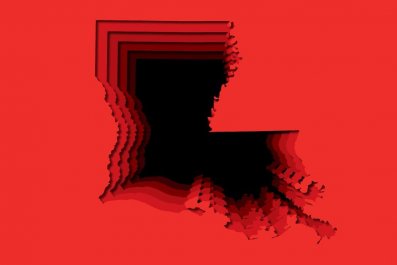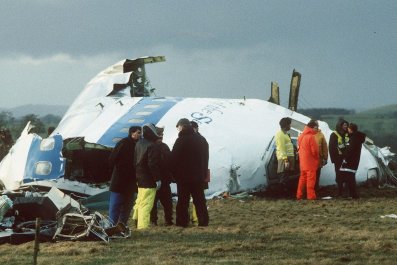Irma Mancilla heard a dozen minute explosions. Then, it all went dark.
The pop-pop-pop! she heard was from burning rocks tearing through the party balloons outside her house - they were for her grandson's second birthday. The sky turned black as rocks and ash started to fill the air, making it impossible to breathe. The town, radiant and lively only minutes before, fell silent.
For many in Villa La Angostura, a hilly and isolated town of 12,000 in the Argentine Patagonia, the volcanic eruption of the Puyehue volcano in nearby Chile two years ago is still an off-limits topic. The ash cloud was so extensive that it reached Buenos Aires, 1,000 miles northeast and kept the region shrouded in darkness for weeks. More than 2.5 tons of ash buried the town for months; flights were grounded, roofs collapsed, businesses floundered and scores of people fled. The army was deployed to aid in the emergency, which resulted in more than $100 million in damage.
But for some, the devastating eruption was a once-in-a-lifetime opportunity.
Years before the explosion, José Boer, a prominent local businessman, had halted construction of a building in his tourist complex because he'd run out of money. When the initial eruption subsided, Boer asked his three children, scattered as far away as Ireland, to come home and help remove the ash that was piled nearly 12 inches high in many places, covering streets, lakes, buildings, statues, and trees. But he also kept some of it.
Boer had heard of a local man, Jean-Pierre Raemdonck, who had used ash from a volcanic eruption in 1960 for numerous construction projects. Could it be done again, five decades later?
Day after day, Boer tested different ash-to-cement ratios in order to create the optimal building material. Finally, he found it: 12 buckets of volcanic sand - the explosion had dumped both fine ash and pumice-like rocks that resembled light sand - for one bucket of cement, with a dash of quicklime. The mixture turned out to be even better at soundproofing and insulation than the bricks he had initially planned on using.
At the time, a cubic meter of sand cost $98, but, "suddenly, I had 1,500 cubic meters," said Boer. "We saved a lot of money in our construction." He does not know how much exactly but says that he had to buy less than half the material he would have needed otherwise.
For the staff at EcoHuertas, a local organic farm, the ash at first was a noxious invader that turned almost as heavy as concrete after each rain, cutting off their produce from sunlight and minerals. But the first harvest after the volcano eruption turned out to be more bountiful than any before it. Not only was there a 15 percent increase in output, but the quality of it was astounding: four-pound potatoes and strawberries the size of apples.
The harvests today remain superior, both in yield and quality, says Lucrecia Ochoa, director of EcoHuertas.
It wasn't just the produce that emerged from the ash bigger and better. The town was humming with camaraderie, people taking their wheelbarrows to the streets and helping coordinate the support that was pouring in from other Argentinian provinces.
The Villa La Angostura community was set alight, "not just in terms of survival during a time when we didn't have even the basic commodities, power, water," says Ochoa, "but also the creative capacity to adapt ourselves to a new situation." Artists used ash to create pottery, youth composed hopeful songs about recovering from the explosion and entrepreneurs launched ash and volcano tours for travelers.
Not everyone who tried to be creative with the volcanic by-product was successful. Irma Mancilla tried to make bricks out of the ash. She was able to make three of them but the formula she developed required more cement than she could afford, so she stopped.
During a recent visit to her home, where piles of ash were still visible on her neighbors' low, rickety roof, Mancilla could not find the bricks or the mold she used to make them with. "I had so many projects with the sand," she says quietly, looking out at her cluttered patio where several underweight dogs had curled up on pieces of cardboard. She said further molding has been impossible "without the rest of the materials."
And many parts of the town may never fully recover. The woodland around EcoHuertas is still covered in volcanic sand. A nearby beach is made up almost entirely of this material, which also dusts the sides of a stream that flows into a local sapphire-blue lake. On a recent afternoon, a local Afghan hound, Gandolff, ran over mounds of ash dotting the mountainous landscape like inverted craters, as his owner called out to him.
Still, a fortunate few turned ashes to gold. When Boer opens the rental apartments he built with volcanic sand in June or July, he will double his capacity overnight. He says he is proud to be "a crazy person who kept betting on Villa La Angostura."
























